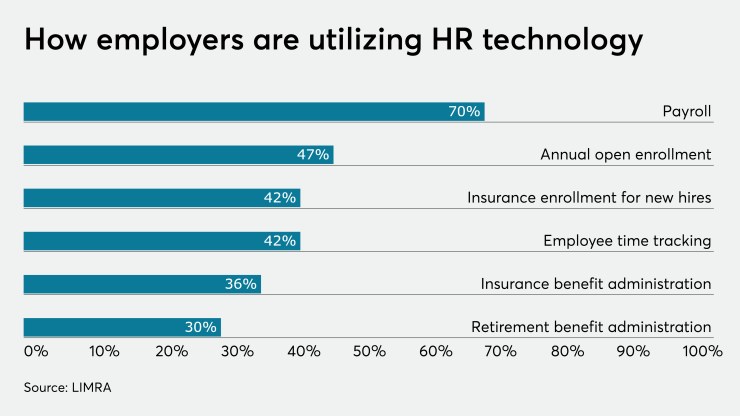Benefits open enrollment should be a year-round process that’s aided by artificial intelligence, says Steven Malme, a senior vice president of platform strategy at
“Moving away from traditional once-a-year benefits selection to a year-round process ensures timely access to benefits as they are needed,” Malme says. “AI allows employers to engage with employees more regularly without adding administrative burden to the HR or benefits administration team.”
As benefit plans continue to adapt to the
“AI can simplify benefits selection, purchase and use and effectively engage consumers and improve their lives with benefits,” he says. “There are numerous life events that can trigger AI-powered smart moments and present relevant options.”
Malme discussed how AI will play a role in benefits selection and how making enrollment more fluid and year-round can ensure financial well-being for employees.
Why should healthcare benefits be a year-round discussion in the workplace?
The simplest answer is individuals don’t live life two weeks out of the year during open enrollment. Life happens every day, and the business of benefits has to evolve to be employee and consumer friendly and a year-round engagement to help them through planned and unexpected life moments.
We live in an on-demand society, and we need to transform how benefits are bought, sold and used. The benefits industry operates in a decades-old paradigm where benefits are imposed on consumers or not offered at all. For those who do have options, the open enrollment process has them make 15 to 20 or more complex financial decisions once a year. Making those decisions requires significant knowledge and insight. To get it right, consumers need to understand their budget, remember the past, predict the future, calculate risk, all while navigating industry jargon. It’s no wonder employees and families struggle with the process.
How can these ongoing considerations benefit an employee’s financial health?
With a consumer-driven benefits strategy, employers have the opportunity to provide new benefits and valuable options in those moments that matter. Employees have the choice to increase their life insurance and add a beneficiary with the birth of a child. They have the choice to select and invest in a 529 Plan versus buying an Xbox. They have a choice to spend a few dollars on pet insurance to avoid the financial stress that would otherwise come with pet illness.
One of the most important things for an employee is to have the resources they need to manage their health, wealth and lifestyle. Four out of 10 Americans would not be able to cover a $1,000 emergency expense and 1 out of 4 adults skipped necessary medical care in 2018 because they could not afford the cost.
How can AI help personalize benefits for these specific employee needs?
AI can assist and guide employees as they analyze and make decisions to ensure they are choosing benefits that are personally relevant for their life stage and lifestyle. BenefitSAIGE, our AI-powered platform, leverages the differentiated data integrated into our platform to deliver a hyper-personalized benefits experience. This experience is designed to better educate employees to ensure effective benefits selection and usage. As an example, an employee about to go on maternity leave may be prompted to consider grocery delivery to spend more time with her new baby. Finally, AI can eliminate and automate mundane manual tasks so HR leaders and administrators can focus their time on what matters most: employees.
How is AI currently being used when it comes to enrollment and healthcare utilization?
Benefitfocus integrates AI throughout our entire consumer benefits platform from open enrollment and year-round communication to analyzing selection and claims data throughout the year to offer benefits that employees really need and want.
AI and analytics enable benefits administrators to make more accurate, data-driven decisions in their benefits strategy, while monitoring plan utilization and member health. In addition, these tools may be used to identify, compare and customize plans to deliver optimal employee coverage at the best possible price. Finally, AI improves communication between employees and an employer by providing a singular point of control.






